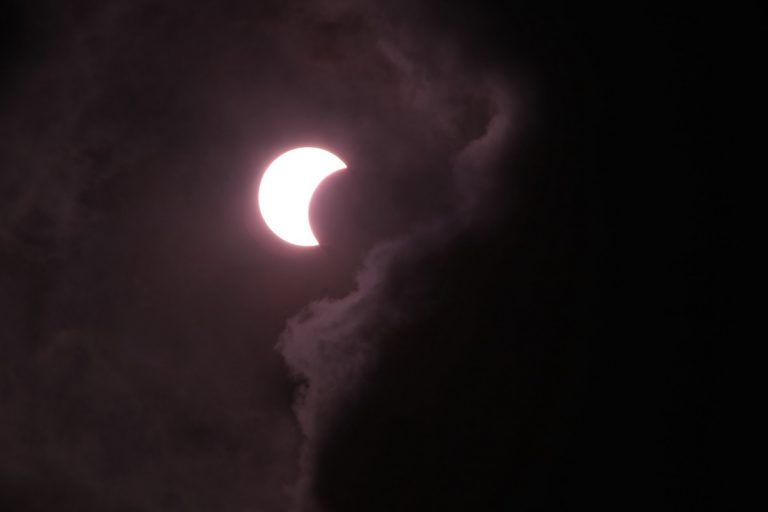On Thursday, a solar eclipse will be partially visible in Czech Republic, the highest solar eclipse above the horizon visible from Czech territory until June 5th, 2179. June and July nights will also offer a view of unusual “noctilucent” (night-shining) clouds. Photo Credit: Freepik / Illustrative Photo.
Czech Rep., June 10 (BD) – The months of June and July will be eventful for those who appreciate the delights of watching the sky at night. On Thursday, it will be possible to spot a rare solar eclipse, a phenomenon which occurs when the Moon moves between the observer and the Sun, partially or completely covering the solar disk. The eclipse will only be partially visible from the Czech Republic as the territory is outside of the eclipse’s belt – only spectators in Canada, Russia and Greenland will be able to observe its full effect.
Nonetheless, the celestial event is still an unique opportunity, as it will be the highest solar eclipse above the horizon in the Czech Republic and Slovakia until June 5, 2179. The eclipse will first be visible from Czech territory at 11:35 CEST. The further east you observe the eclipse from, the later it will begin to appear, and the smaller it will be. The peak of the phenomenon will occur in the Czech Republic and Slovakia between 12:30-12:55 CEST, depending on where you are. To avoid missing it, check the specific time for your location using this interactive map from Xavier Jubiero.
Always keep in mind that looking directly at the eclipse can cause severe eye damage, so you should only ever observe it wearing protective equipment, which can be easily found at the observatory near you. Due to Covid-19 restrictions, you should contact your nearest observatory in advance if you want to watch the phenomenon guided by experts.
If eclipses are not your celestial cup of tea, nights throughout June and July will also offer a view of unusual night-shining clouds (also known as noctilucent clouds). Night-shining clouds form significantly higher than normal clouds and appear due to the packing of ice crystals into dust particles left at this altitude by meteor dust, volcanic eruptions or even industrial human activity. These night-shining clouds will appear mainly in June and in the first half of July, especially over the northern horizon in the late evening between 10pm and midnight, and early in the morning between 2am and 4am. It’s not certain that they will appear every night, so if you’re interested in catching sight of this phenomenon keep an eye on this alert website.








